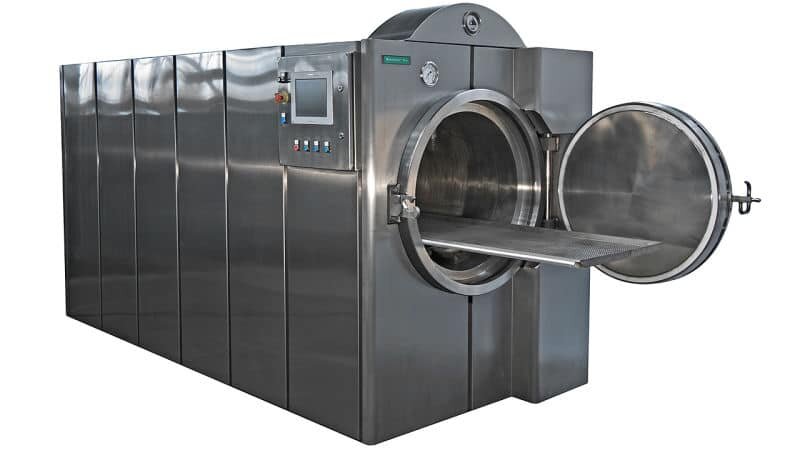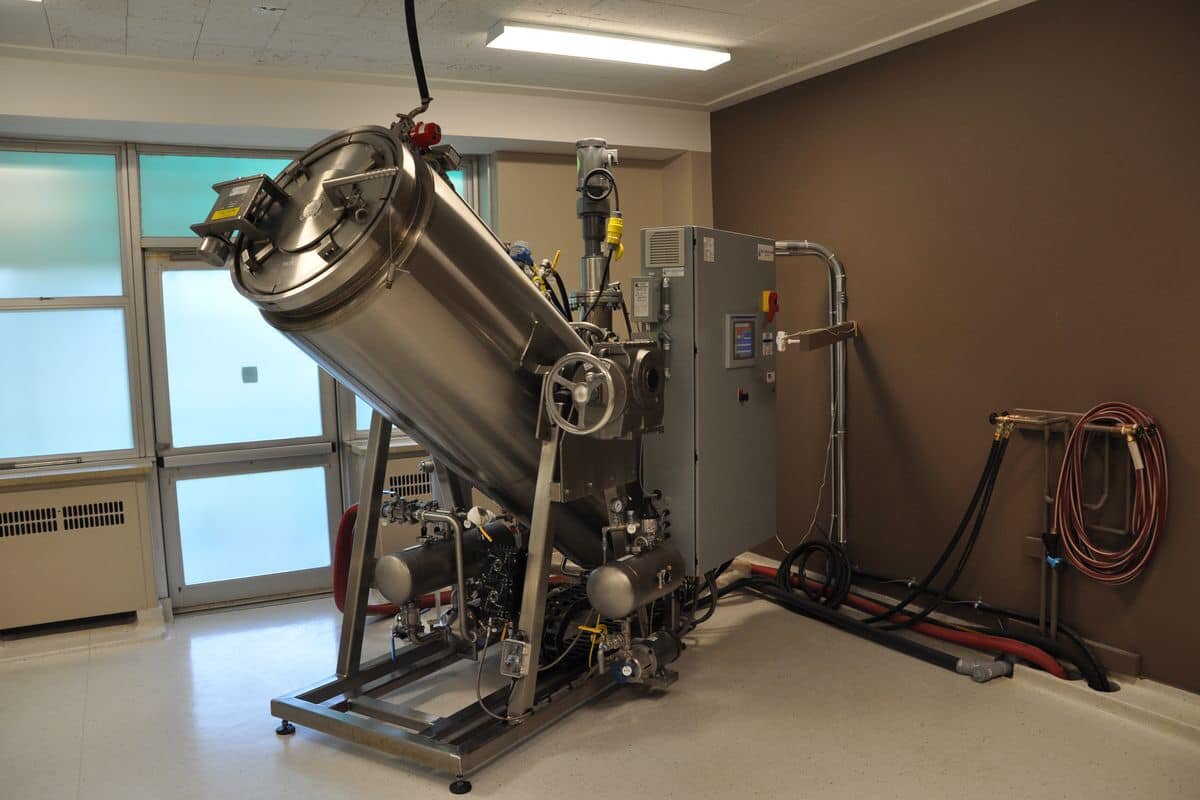Funeral Facts: Alkaline Hydrolysis
Don’t want to be burned or buried after death? Try the gentler, eco friendly option known as “water cremation”
Bodies. We can burn them or bury them. We can even burn them, THEN bury them.
But what if you aren’t very keen on either option?
Maybe it’s the expense that turns you off, or the idea of being consumed by fire. Maybe you are concerned about the impact on the environment. You don’t need to be a hippie to worry about emissions and carbon footprints. There IS another option, but it’s not widely available yet.
Alkaline hydrolysis. You may have heard it called bio cremation, resomation, flameless cremation, water cremation, green cremation, chemical cremation, aquamation, chemical disposition, or dissolution.
You may already have some misconceptions too. Let’s get those out of the way. No, this isn’t acid melting your body like the mob. No, you don’t get turned into sludge and flushed down the toilet. No, the stuff that gets disposed of isn’t nasty and polluting our water. So, what is it then?
The short version:
Rather than a body breaking down into it’s basic chemical elements over a period of years buried underground, we can speed that process up using a combination of water, alkali, and heat. At the end, you get an urn full of cremated remains.
That’s it. That’s the whole thing.
Here’s the slightly more technical explanation. How well do you remember your high school science classes? Human bodies are made up of chemicals, and chemicals are made up of molecules. We’re mostly water, up to about 60%. The other molecules inside of us combine to form proteins (like in muscle, bone, skin, hair and connective tissue), fats, carbs, DNA, gases (including my personal favorite, formaldehyde), and many other small molecules like amino acids and vitamins. We’re like cakes, comprised of many basic ingredients that bond together to form something amazing.
Is it possible to “unmake” a cake? With alkaline hydrolysis, we can unmake our “cake” and then some. Instead of breaking down our cake into ingredients like flour, eggs, and butter, we can break it down into the chemicals that *make* flour, eggs, and butter. We can reduce our cake to the most basic, essential building blocks of molecules. It would no longer resemble a cake, or even recognizable cake ingredients. That’s the level of reduction that takes place in the water cremation of a human body.
So how do you unmake a body? How do you unmake it over a period of hours rather than waiting years for the body to unmake itself? Use a pressure cooker! No, it’s not an industrial Instant Pot. It’s a similar premise though. The vessel is sealed, high pressure limits boiling, and the process is completed fairly quickly. Inside the vessel is a mixture of about 95% water and 5% KOH. That’s an alkali called potassium hydroxide, better known as lye. If you’re thinking that lye is an acid that will melt a body, that’s not true. It’s a base. A couple notes about pH, since you probably don’t remember that from high school chemistry either. pH is the scale that tells you how acidic something is. It goes from 0-14, with 0 being strongly acidic and 14 being super basic. 7 is neutral. According to trusty old Wikipedia, here are some average ranges of common solutions: battery acid <1, gastric acid 1-1.5, vinegar 2.5, orange juice 3.3-4.2, black coffee 5-5.03, milk 6.5-6.8, pure water 7, sea water 7.5-8.4, ammonia 11-11.5, bleach 12.5, lye 13-13.6. Some people even specifically drink alkaline water (pH 8-9). Other alkaline substances include soap, household cleaners, toothpaste, and baking soda. All of this to say, don’t be afraid of scary sounding words about chemicals.
Now, back to business.
There’s a couple companies out there right now who manufacture human alkaline hydrolysis machines. They vary in details (some are lower pressure and take longer, and some chambers tilt at a 35° angle), but the overall process is the same. The body is placed on a tray and slid into a stainless steel chamber. The chamber locks closed, with something like a hydraulic submarine door. The prescribed mixture of water and alkali (based on the weight of the deceased) flows inside. The temperature is raised. Pressure and water agitation are used to accelerate the process. It’s a bit like a whirlpool bath, and it doesn’t boil. Since the entire process is automated, the operator can simply press the start button and walk away until it’s finished. The progress can be monitored by computer or app. After the body has entirely broken down, the system can adjust the pH level of the waste fluid before releasing it into regular municipal plumbing. What’s left inside the chamber afterward is simply bones. Bright white, sparkly clean, wet bones.
You may be thinking, “wait, are they flushing Grandma Soup down the pipes?!” Well, no. Remember the cake analogy? When we unmade the cake (body), we went beyond that and also unmade the ingredients too. You aren’t flushing something that is identifiable as a “cake,” or even recognizable as flour, eggs, or butter. You wouldn’t look at those molecules and think, “no way, we can’t dispose of that, it’s a perfectly good cake/grandma!” No. Not anymore. It’s been reduced to bare elements. Everything has been reduced to the simplest building blocks of amino acids, peptides, sugars, and salts. There is no more DNA or RNA. If the body was embalmed, all of those chemicals are broken down. The liquid is even sterile! It’s literally cleaner than anything you have personally flushed down the plumbing at home. The process inactivates viruses, bacteria, and even the dreaded prions responsible for Mad Cow Disease or Creutzfeldt Jakob Disease.
In case you’re burning with curiosity, the waste fluid (aka effluent) looks like coffee with cream in it. It has a smell: not good, not bad. It’s so clean that wastewater treatment plants actually like it running through the pipes, as it helps clean other dirtier water along the way. Another fun fact is that the effluent can be used as fertilizer due to its potassium and sodium content. If you’re still uneasy about thinking about the people ingredients flowing into sewer pipes, don’t forget that flame cremation releases those same people ingredients into the atmosphere. If you’re buried, your people ingredients will eventually drain into the earth. It just takes longer.
After the effluent has drained, you’re left with a tray of crumbly wet bones. They’re collected and placed into a drying device. Once the bones are sufficiently dried, they’re processed like regular cremated remains: pulverized into “ash” by an industrial blender called a cremulator. They’re placed into an urn of the family’s choosing, or disposed of in any of the methods available for regular cremated remains (scattered, painted into a picture, inserted into a tattoo, shot into space etc). There are a couple differences though. First, the cremated remains are super fine and super bright white. Instead of the grayish, slightly chunky, sandy kitty litter appearance of regular cremated remains, these cremated remains look like flour or powdered sugar. The other difference is the volume returned. Water cremation yields about 20-30% more cremated remains! Why? The delicate bone matrix inside bones tends to survive this gentler process better than flame cremation. Also, it’s not lost to air circulation and smokestack emissions. Younger people have greater bone density, which also yields more remains. So, make sure your urn is large enough, or that your funeral director has the patience to let your remains continue to settle. The fine consistency allows it to settle more over time, especially with some gentle taps on the side of the urn.
What else is different between flame and water cremation?
Flame crematories operate around 1400-1600 F, while various models of water crematories operate between 199-350 F. Depending on the type of equipment used, the length of time to complete is virtually the same. The initial cost of the equipment is higher for water cremation, but it costs less to operate. Water cremation chambers require less upkeep, unlike retorts that must be fully rebricked every 5-10 years. When you start talking about environmental impacts, however, water cremation is the clear winner. It uses about 1/4-1/8 the energy used for a flame cremation, with a 75% carbon footprint reduction. There are no carbon dioxide emissions, especially from extra material in the cremation chamber like plastic body bags and wooden caskets. Another big concern is the amount of mercury fillings that end up in our atmosphere. The average person has about 3 grams of mercury in their mouth. Water cremation keeps the mercury intact and allows it to be safely recycled. Similarly, metal surgical implants and pacemakers stay inside the body during water cremation, and are recycled after. Pacemakers must be removed prior to flame cremation since their batteries explode, but the lower temperature of water cremation doesn’t present that danger.
Another feature is the perceived gentleness of water cremation. There’s less operator interference during the water cremation process than in flame cremation. Partway through burning a body, the operator has to open the chamber and reposition the body under the flames using a long rake. In order for the flame to penetrate the cranial vault and fully consume the brain, the skull is sometimes gently tapped with the rake. During a water cremation, the chamber remains sealed for the entire process. To facilitate water access to the brain, the operator can externally direct a jet of water at the skull rather than physically tapping it. If this still sounds a little unpleasant, it’s unfortunately necessary. If the skull were to remain intact in either form of cremation, the brain wouldn’t be properly consumed. No one wants brain pieces mixed up in their cremated remains.
Can people be embalmed and viewed prior to water cremation?
Sure! There are a few differences in preparation, but it’s totally doable. Make sure you tell the machine that the body is embalmed so it’ll add an extra measure of chemical to counteract the tissue fixation. The machine will totally break down the embalming fluid along with the body, so it’s not harmful at all to release back into the environment. Other materials need to be carefully thought about. Some things are ok to have on or in the body during water cremation, but other things should be removed or not used. For example, the fluffy absorbent cotton we use for various purposes during embalming turns into an absolute nightmare in the chamber. Since it’s super absorbent, it expands tremendously in volume and can clog the filters. If you miss a chunk of cotton or something else with plant based fibers, it can greatly increase the length of time for the cremation.
If the person has been autopsied, you cannot keep the guts in the regular plastic viscera bag. If you do, then you’ll end up with an intact bag of guts at the end. Clearly, that’s not acceptable. Instead, the organs must be transferred into a biodegradable bag. It can be as simple as small compost bags from the hardware store. Those will dissolve during the cremation along with the organs inside. While you’re at it, don’t add any embalming compounds to the viscera like you would normally do. Plastic isn’t dissolved during the process, so try to avoid using (or remove, post viewing) any small plastic bits like eye caps, mouth formers, and AV plugs. If they’re small enough, the plastic can warp and potentially cause issues with the filters. Plastic identification bands can be removed as the body enters the chamber, and kept with the decedent’s paperwork alongside the chamber. Again, it’s thin plastic and can warp. If not already removed during embalming, get rid of external medical devices (IV’s, colostomy bags, catheters, tracheostomy tubes, bandages). For bodies that have donated organs, bones, or skin, open up the sutures and remove all of the absorbent things that have been inserted. Take extra special care to find every single piece of cotton or absorbent pad, or you’ll regret it. You’ll spend all night cremating if you miss some. Suture string survives the water cremation process, along with metal implants and plastic or wood long bone donation prosthetics. Those can be plucked out of the bone remains and properly disposed of, having been entirely sterilized during the process.
Ideally, the body is now in a virtually “pure” state, like the day it was born. It cannot be dressed in regular clothes, or encased in any artificial container. It cannot have flowers on it. Alkaline hydrolysis only works on animal proteins, so everything must fall under that criteria to dissolve properly. Many existing water cremation laws were simply copy/pasted from flame cremation laws, so the mandatory use of an “alternative container” has had to be exercised creatively. Most simply, the body can be placed in a biodegradable pouch. If a family wants to witness the cremation, a ceremonial shroud can be used instead. It can be made of wool, silk, or leather, but only if it’s 100% pure and contains no artificial fillers. Only animal derived fibers will work, or you’ll end up with a mess. The same goes for clothing that stays on the deceased. As water cremation becomes more available, new products are being invented to keep up with the demand. Some water crematories provide a silk robe for viewing, so it doesn’t need to be removed after. There is also a wooden rental casket with a silk lined stainless steel frame inside. After a viewing or funeral, the silk lined stainless steel insert slides out and goes into the chamber. The silk dissolves, and the sterile stainless steel frame is removed and reused.
Sounds pretty magical, doesn’t it? So why isn’t this process more widely available? Currently, it’s only legal for humans in fewer than 20 states and a sprinkling of other countries around the world. It’s been acceptable for pets for much longer, and was originally pioneered in 1888 to dispose of animal carcasses. In 2005, the first human machine was used at the Mayo Clinic to dispose of cadavers, and since then, other medical schools have used them for their donated bodies (they don’t have to adhere to the typical body disposition laws that govern mortuaries). Unfortunately, legislators have been slow to push alkaline hydrolysis. Many are opposed to it, considering it a desecration of human remains. Some don’t understand the process and think it sounds yucky. Some people are reluctant to break from tradition. Ultimately though, change will happen. Just as we learned to embrace cars over the horse and carriage, we will learn to embrace other technological advances. We especially need to get on board with environmentally friendly technology. I think water cremation is a wonderful option for mortuaries to offer, and hope to see its continued adoption. You can do your part by spreading this knowledge and encouraging others to see past the “ick factor.” Become an informed consumer, and demand legislative changes!
What do YOU think? Would you choose water cremation?
Tell me why or why not in the comments below!










